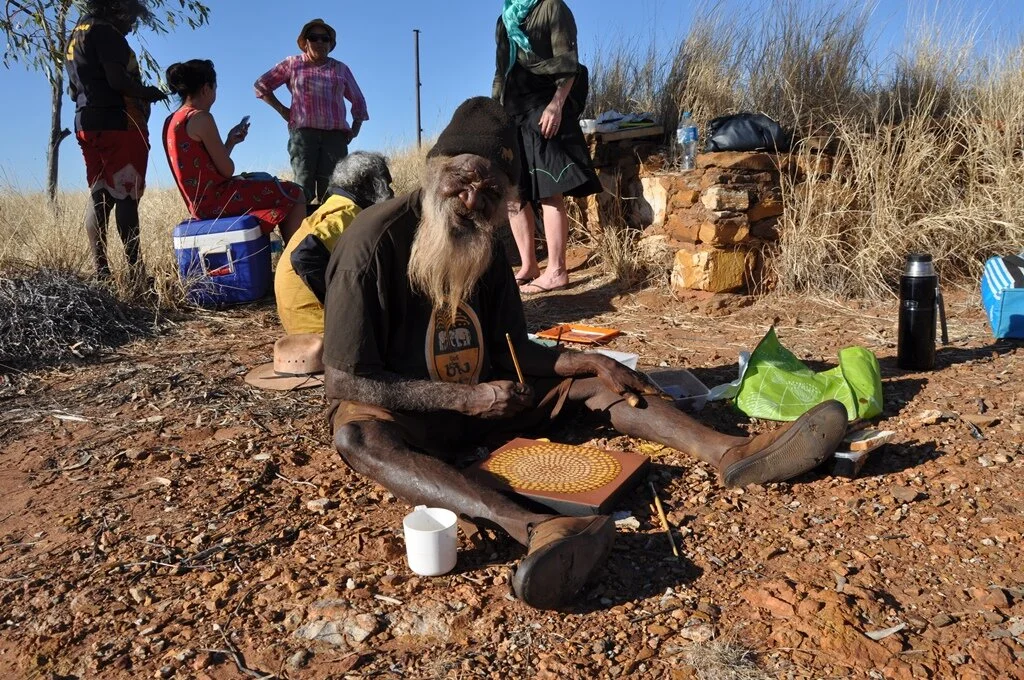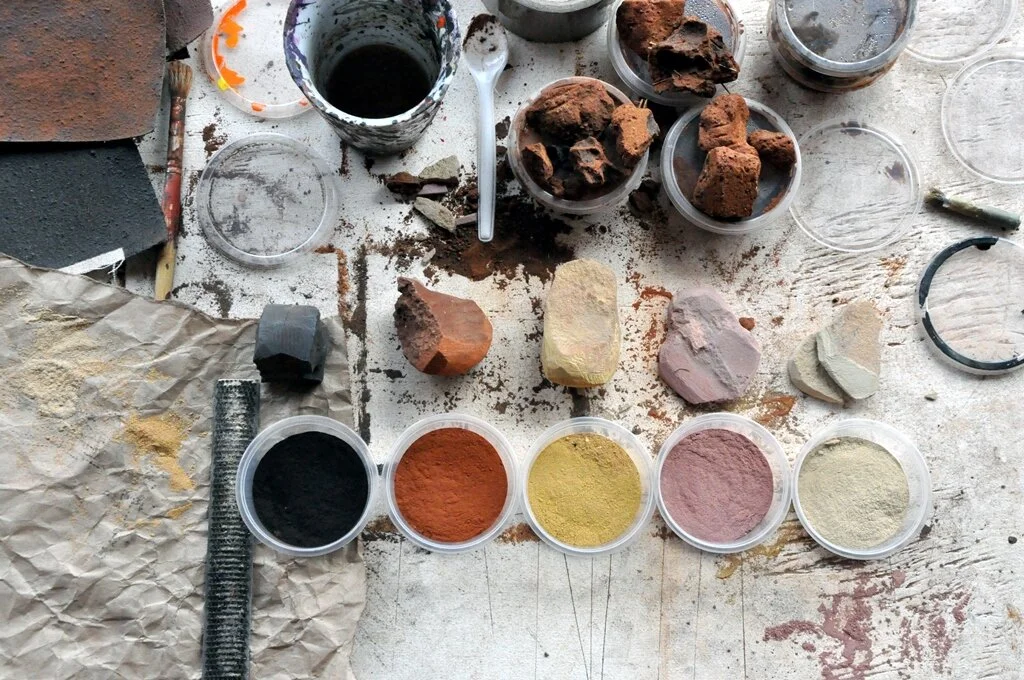North by Southeast Residency: Tor Lindstrand in Balgo #1
Tor Lindstrand is currently working with the community of Balgo, as part of the Spaced North by Southeast program.
Tor Lindstrand (Stockholm) is an Associate Professor at the Royal Institute of Technology (KTH-A) and an architect. His practice oscillates between architecture, art and performance, in numerous cultural contexts with projects presented in institutions including, the TATE Liverpool, the Venice Architecture Biennale, Steirischer Herbst, the Shenzhen and Hong Kong Bi-city Biennale of Urbanism/Architecture, Van Abbe Museum, VOLTA Basel, Performa New York, Royal Dramatic Theatre Copenhagen, NAI Rotterdam, Swedish Architecture Museum, Tensta Art centre, Botkyrka Art centre, and Storefront for Art and Architecture.
Here, Tor shares an update from Balgo.
“To think in architecture, but never be an architect. To always paint, but never be a painter.”
Architecture and the use of space is both a response to our surroundings and a cultural construct, it gives shelter and transcends time connecting the present with our historical path. Too often architecture is merely understood as an object - a building. But architecture is, more importantly, an on-going process, it changes over time, transforms as it is used and alters by shifting contexts. Architecture is something we perform.
Preparing for my first visit to Warlayirti Artists Aboriginal Corporation I made some research about indigenous architecture in Australia. The most common understanding still seems to be that indigenous Australia historically existed without architecture. A statement that only makes sense if architecture is defined from a strictly western cultural perspective, as preposterous as the colonial claim of Australia as a Terra nullius. Research from the last decades have shown a rich cultural history of building activity (Paul Memmott et.al). What I started to learn from spending two weeks in Balgo, having the opportunity to share the workspace of the artists at Warlayirti Artists, is of a fundamentally different, and complex understanding of landscape, time and lived space. It is important here to acknowledge that I have a very shallow understanding of indigenous culture in general and even less of the specific culture of the Tjurabalan people from the Tanami and Great Sandy Deserts. The observations made here are subjective and comes from a very short visit.
I spent most of my days at the art centre, helping out with little things such as making tea, stretching canvas and mixing colors. I quickly found out that there is little point in asking too many questions. The artists all work very hard, and have little time answering uninformed questions. Most artists paint sitting on the floor, so the best idea was to just shut up and sit down, and with time I got to hear more and more stories. About country far away in space and time, about rockholes, soak waters and living water, about the Rainbow Serpent and the Luurnpa (Kingfisher), about everyday life and religious happenings. As many indigenous art centers, Warlayirti Artists play an important part in the economy of remote communities. Warlayirti Artists is the main source of income in Balgo, standing for seventy percent of the total revenue stream in the community. And yet, even though paintings are constantly being produced, I never once heard or saw anyone taking their work lightly. As the paint is being laid down, with brushes or sticks, it is done with the highest degree of focus and concentration. My interpretation is that what is going on is in fact not the production of images or art objects as commodities, that is (however important) just the business side of it. What really goes on is that country, often far away, and the history of that country and the people living there past and present is being re-activated and re-lived. The way of applying color, often layering with small movements done over and over again, seems to amplify the meditative state of making. The core activity is not in the production of objects, the culture really exists in the repetitive doing. Landscapes, country and history cannot be laid down once, as in the western tradition of writing (religion, law, science), but it has to be activated again and again to be kept alive. Because of the historic background of Balgo, a mission that became home to some of the many people being displaced as a result of the aggressive colonization of Western Australia, many stories also stories about loss. Loss of country, loss of family, loss of culture. The painting seemed to me to be an activity of memory, of reconnection with all that has been lost.
Apart from doing little chores around the art centre, I got sucked into the landscapes of the desert. Most artists at Warlayirti Artists uses acrylic paint, but some also uses red and yellow ochre gathered from the desert. When first coming down the Tanami track thanks to a team of researchers and art conservators from the Grimwade Centre for Cultural Materials Conservation at Melbourne University, what struck me was the size of the landscape; big skies, red dirt and Spinifex stretching from horizon to horizon. As i started to do longer and longer walks in the desert around Balgo, I discovered that the desert is full of colours. The ancient ocean floor of the Tanami Desert is layered with white, black, yellow, green, purple and endless ranges of red. I got permission to pick up and use rocks and plants to extract pigments and produce colors, a long-standing tradition in aboriginal culture. I also gained knowledge from the art conservators doing work at the art centre. To me this was a way to become more familiar with the surrounding landscape, but most importantly an activity to carry out side by side with the other artists. Trying my best to resist doing a project, and instead do the doing.
Finding yourself in new environments, in foreign situations meeting different ways of life, the sheer amount of information often seem to take your breath away. As you lose your balance, you try to hold on to things. To me this holding on became to compare, to look for similarities, common ground, to make things symbolic to translate experiences into something more theoretical, more abstract. As for the continuation of the project I will try and come back more open to differences. I believe that the production of new knowledge lies in being open to difference, and if there is anything I take back with me to my country it is all this new knowledge that everyone around Warlayirti Artists so generously have been willing to share. Hopefully what I can bring back next time can also be productive to the people at Warlayirti Artists and the extended community of Balgo.
-Tor Lindstrand
Larry Gundora painting at the Old Mission of Balgo
Pigments from the Tanami Desert


